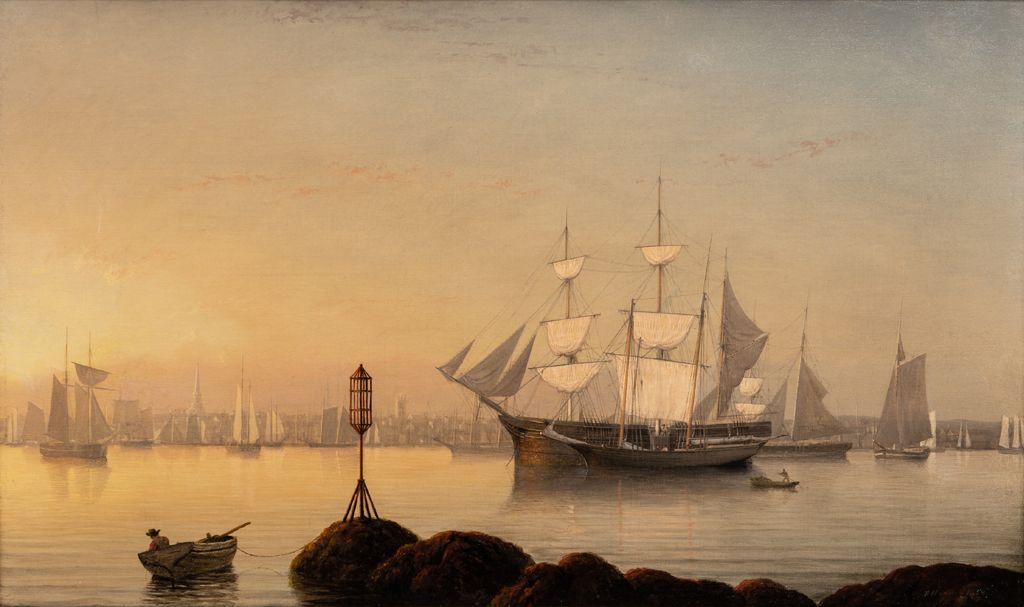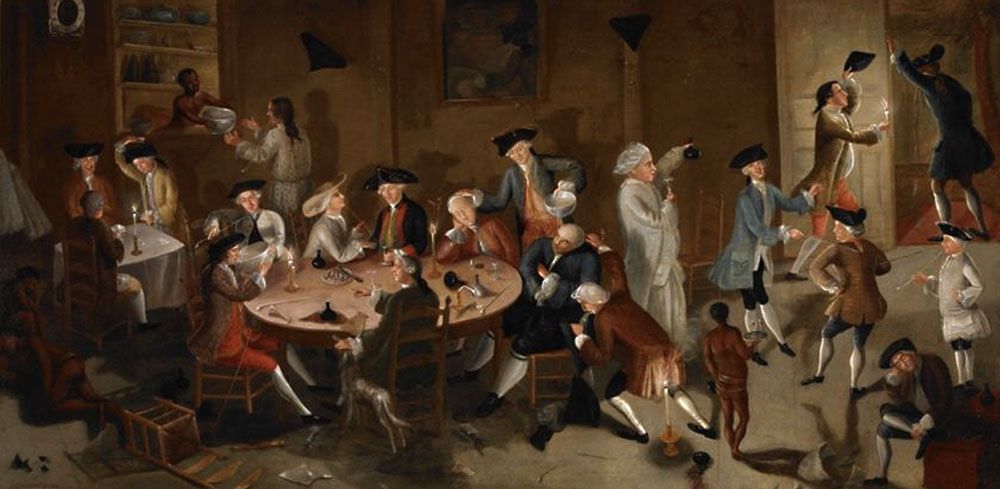
Fitz Henry Lane (1804–65)
View of Gloucester Harbor, 1858
Oil on canvas
McMullen Museum of Art, Boston College, Carolyn A. and Peter S. Lynch Collection, 2021.20

Jeffery Howe
Professor Emeritus, Art History

Although a leading luminist painter, the artist’s name has been confused by historians. Born Nathaniel Rogers Lane in Gloucester, Massachusetts, in 1804, he legally changed his name to Fitz Henry Lane in 1831. In the twentieth century he was mistakenly identified as Fitz Hugh Lane, although recent discoveries have corrected this. In 1832 he moved to Boston, where he was influenced by the work of Robert Salmon and practiced the relatively new art of lithography. In 1848 he moved back to Gloucester to a house he designed with a top floor studio for panoramic views of the harbor (see photo). Lane was paralyzed as a child, probably by infantile polio, and was obliged to use crutches. Nonetheless, he became one of the most skilled maritime artists of his time. His style was very precise and detailed, leading to speculation that he may have used a camera lucida, an optical device for projecting images.
View of Gloucester Harbor shows the outlook from a small promontory on Rocky Neck, with the distinctive Black Rock Spindle navigational aid in the foreground. Rocky Neck became the site of a vibrant artists’ colony that persists to this day. A variety of large vessels and smaller craft attest to the success of the fishing port. The soft glow of the sky veils the cityscape in the distance, and is reflected on the still surface of the harbor. The silhouette of the Spindle and the clearly defined ships in the middleground create visual interest against the backdrop of a thriving coastal community.

Conevery Bolton Valencius
Professor, History

Fitz Henry Lane depicts sunset glow on the sails and water of busy Gloucester Harbor, north of Boston, before the Civil War. This painting captures not just the end of a day, but of an era. Eighteen-fifty-eight was one year before entrepreneurs began pumping petroleum from beneath northwest Pennsylvania, in a commercial and scientific development of world significance. Coal-powered steam engines had already begun to remake transportation. Within decades, commercial sailing vessels would all but vanish: by World War I, most working boats ran on coal or oil. Gone, too, the wooden cage-like structure in the foreground, a post lantern, one of many marking rocky outcrops and channel openings in harbors such as Gloucester. Fueled by whale oil and later kerosene, post lanterns became obsolete in an era of electrical illumination. This image of calm waters portrays a world about to be upended not only by the cataclysm of war, but by the transformative power of fossil fuels.
With thanks to maritime historian Dr. Lisa Mighetto for insights on post lanterns and to Boston College students in the “Powering America” Complex Problems Core Class for inspiring discussions of US energy history.
Owen Stanwood
Professor, History

Fitz Henry Lane’s painting of Gloucester Harbor is not just a New England scene, but a powerful depiction of the region’s connections with the wider world. Dozens of ships sit anchored in a busy harbor, bringing the world’s goods to Gloucester. The large brig in the middle of the painting may very well have come from Suriname, perhaps the most important trading destination for Gloucester merchants like the Babson family, who commissioned Lane to paint one of their brigs, the Cadet, in 1844. A Dutch colony on the northern coast of South America, Suriname had links to New England that stretched back over a century, recorded in John Greenwood’s famous mid-eighteenth-century painting of Rhode Island merchants “carousing” in a Suriname tavern, served in their revelries by two enslaved Africans (see image).
By the nineteenth century Gloucester had supplanted Boston and Newport as a primary node in the Suriname trade. The town’s merchants made the four-month journey in ships filled with salt cod that would serve as provisions for the thousands of enslaved people on Surinamese plantations, known as some of the most lucrative, and brutal, in the Americas. The ships returned to Gloucester with molasses to be turned into rum in New England’s distilleries. Thus, the painting gestures to the central role of enslaved African laborers in powering the region’s economy, even on the eve of America’s Civil War.

